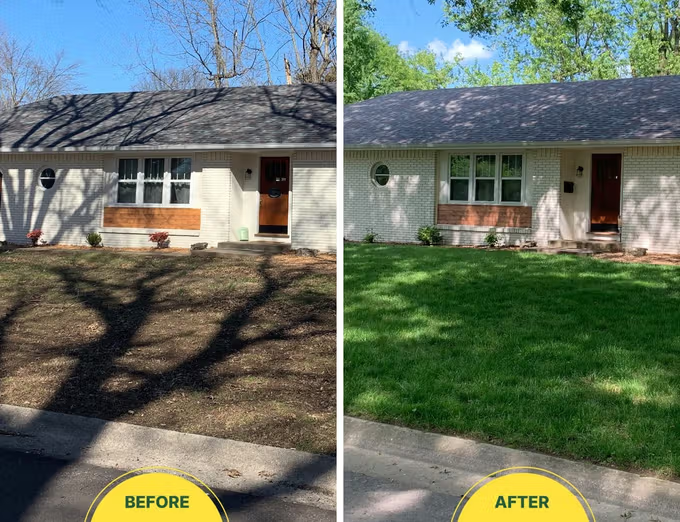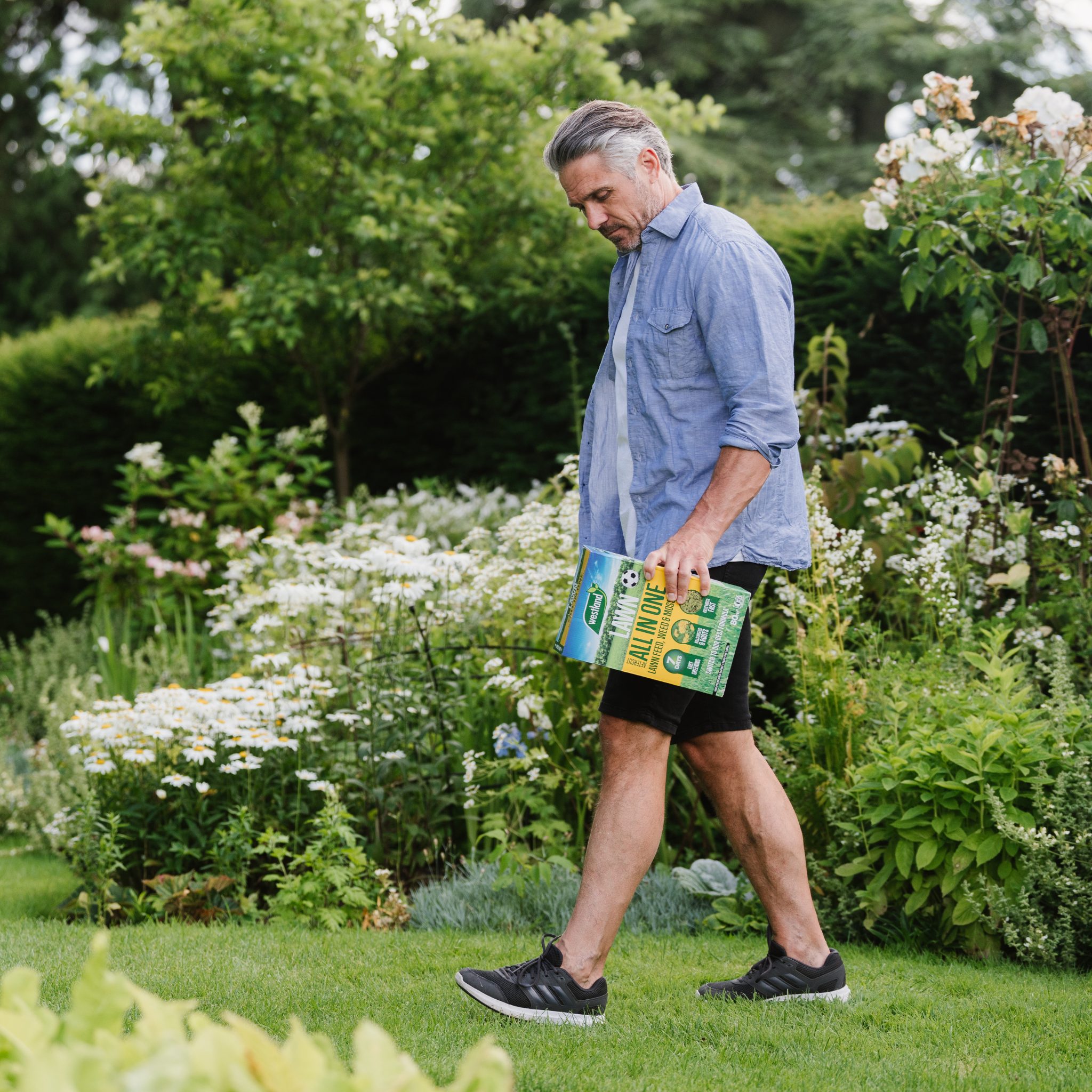Top Dressing Lawn With Compost Guide
Last Updated on April 3, 2025 by Duncan
Besides irrigating, mowing, fertilizing, aerating, and dethatching your lawn, the other thing you should do to keep your lawn in top shape is to top dress it.
If you regularly play lawn games, allow dogs in your backyard, or have people for backyard cookouts, these activities, plus environmental factors, lead to soil compaction.
Compacted soils with a lot of thatch don’t receive enough nutrients, oxygen, and water, so your grass dies in ugly patches.
Dethatching and aerating get rid of the compaction issues while adding topdressing nourishes the grass, so you have a green, healthy lawn that you are proud of.
While you can use fertilizers and other materials to top dress your lawn, one of the best materials to use is compost. The cool thing with compost is that it comes with plenty of perks that include:
It’s nutrient-rich
Compost is packed with bacteria and microorganisms that help the lawn fight off pests, increased water retention, and diseases.
It contains healthy amounts of carbon.
Although, it’s highly undervalued, carbon plays a major role in the overall life of the soil. Some of its work include:
It promotes photosynthesis
It feeds beneficial microbes to the soil, which come in handy at promoting the soil structure, protect the lawn from stress, and break down the nutrients in the soil.
Significantly assists in the healthy carbon to nitrogen ratio in the soil. When the carbon to nitrogen ratio is optimal, the plants have a better capacity to absorb more nitrogen and other nutrients, so the involvement of carbon ensures that the grass can easily absorb the vital nutrients and grow green and healthy.
Compost increases the cation exchange capacity (CEC)
CEC is a measure of the ability of soil to hold nutrients. When the soil’s CEC is low, applying fertilizer and other materials is less effective as the soil doesn’t retain much of the nutrients.
On the other hand, applying compost increases the CEC, which increases the ability of the soil to absorb nutrients.
It’s cheaper
Compost is much cheaper than fertilizer, saving you the money you would have spent maintaining your lawn. If you don’t have money to buy the compost, you can even make it from your home, from potato peelings and other everyday household materials.
Compost is even cheaper as it takes longer to decompose, so you don’t spend a lot of money and time maintaining your lawn.
How to top dress a lawn with compost
Proper top dressing begins with doing the top dressing at the right time. The best time to top dress your lawn is autumn, although it’s not rare to find some people doing it in the spring.
Regardless of your chosen time, ensure that you do it right. Unlike when applying compost on a garden bed, you can’t just dump the compost on your grass as you will kill some of the grass and have to air and water it to revive it.
The best way to go about it is to spike your lawn thoroughly using a hollow tine aerator or garden fork, then apply a thin compost layer (0.25-0.5 inches) across the entire lawn using a spring tine rake or brush.
For the best outcome, mix the compost with sand or topsoil.
The compost will help with drainage and provide the organic material while the sand allows the air to get to the root system and keeps your lawn leveled as it prevents compaction. If you used topsoil, it will add organic material to the soil’s mixture.
To ensure that you apply equal amounts of each material to your lawn, ensure that you fully mix the topsoil and sand.
Once you are done with the top dressing, you should still see all the grass, and the lawn should still be broadly green. A tell-tale sign you have got it wrong is if most of the lawn is brown.
Which is the best compost for top dressing
If you are like other homeowners and looking to undertake general top dressing, aiming to improve the soil structure and provide nutrients to your lawn, you can use any compost. You can even make the compost from your home using kitchen and garden waste.
On the other hand, if your lawn has a particular problem, such as low acidity levels or worms, use specialty compost such as peat compost known to acidify the soil and discourage the worms.
If you have the budget, buy mushroom compost or any other compost from your local compost suppliers. The amount you need depends on the size of your yard. You can calculate the amount you need using this compost calculator or consult a professional.
Valuable top dressing tips
Compost takes time to settle in the lawn, so stay away from your lawn. This calls for you to avoid walking on the lawn immediately applying compost. You also should cordon off kids and pets from playing on the grass.
Give the lawn at least a week before you start using it. No, this isn’t to save the lawn from getting damaged, but to avoid carrying the compost into the house and dirtying the floor and carpet. The situation is even worse if you carry peat-based composts into the house as they leave extremely dark stains on your floor and carpet that are hard to remove.
Top dressing is more effective when you core aerate your lawn before applying compost. For a small lawn, buy aerator shoes but if you have a large lawn, rent an aerating machine from a lawn maintenance firm or equipment supply company.
When buying the compost, only buy screened compost or compost made up of particles that are 3/8 inch or less. The reason for this is because small compost particles infiltrate better between the grass blades than the larger particles, so the grass responds faster to your treatment.
Depending on your area, take your time and find compost that is 100% weed-free to avoid a weeding nightmare in the future.
Immediately after top dressing, irrigate the lawn (unless it’s raining). The purpose of doing this is to disperse the compost evenly among the grass blades, so you have an even spread and even growing grass.


